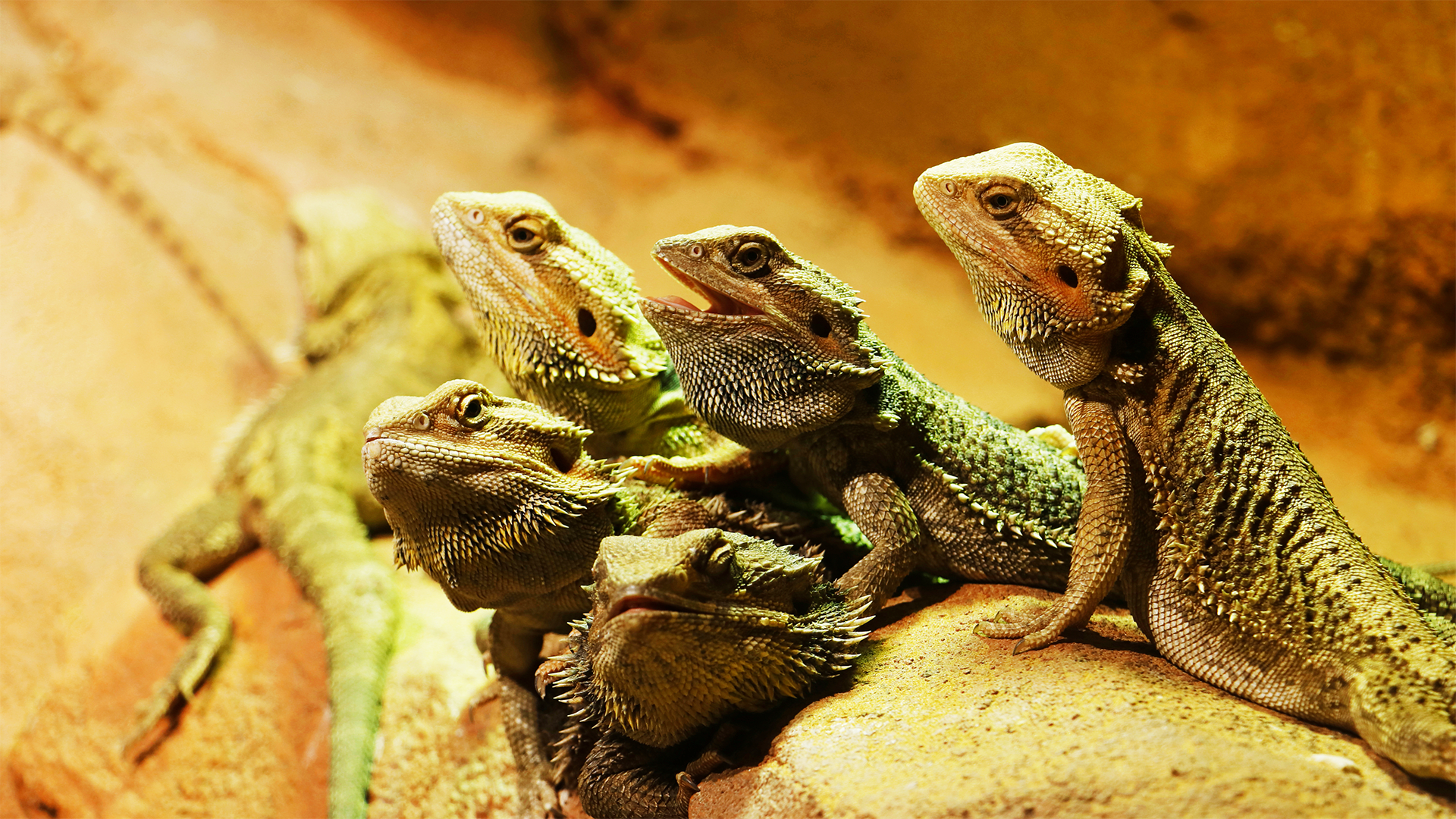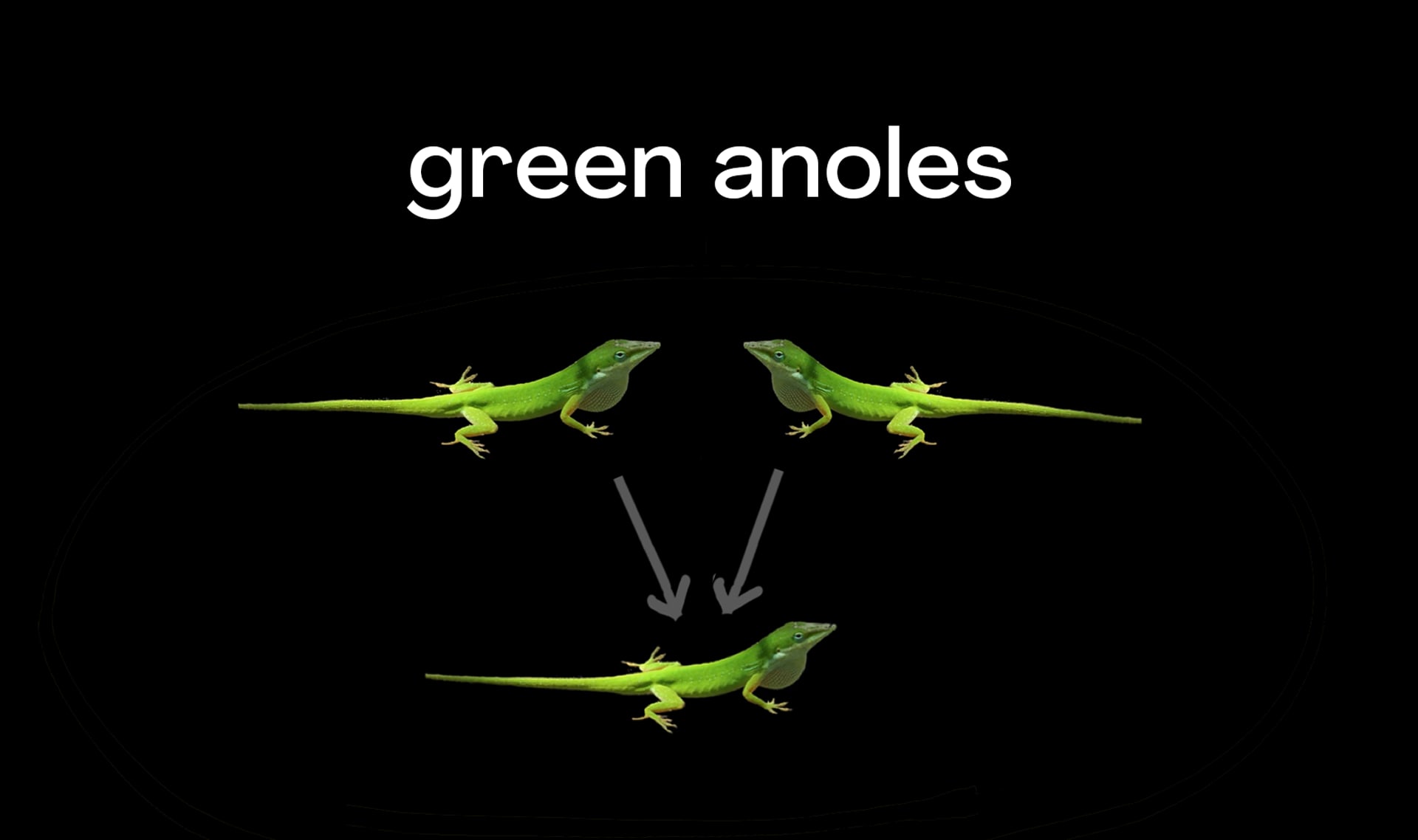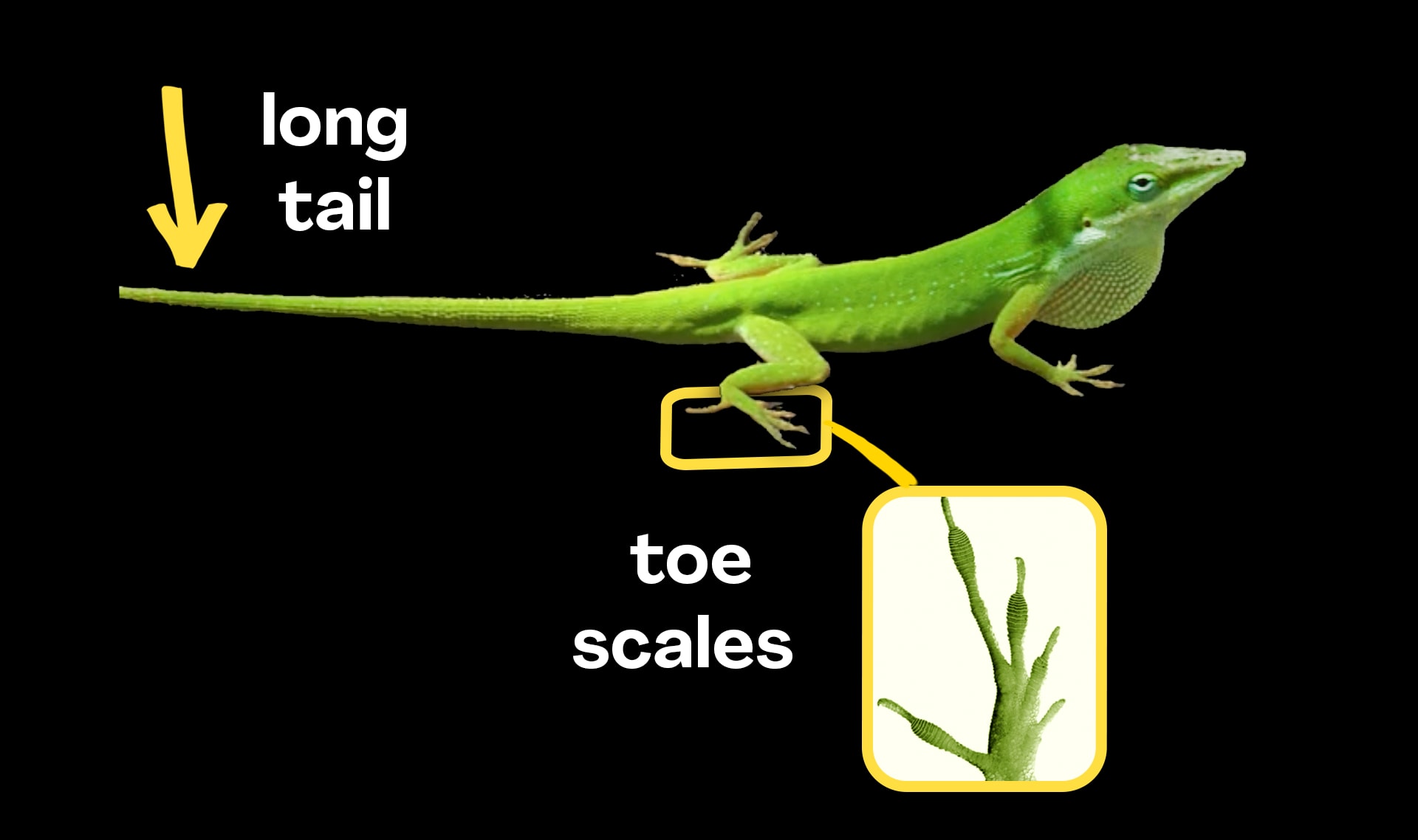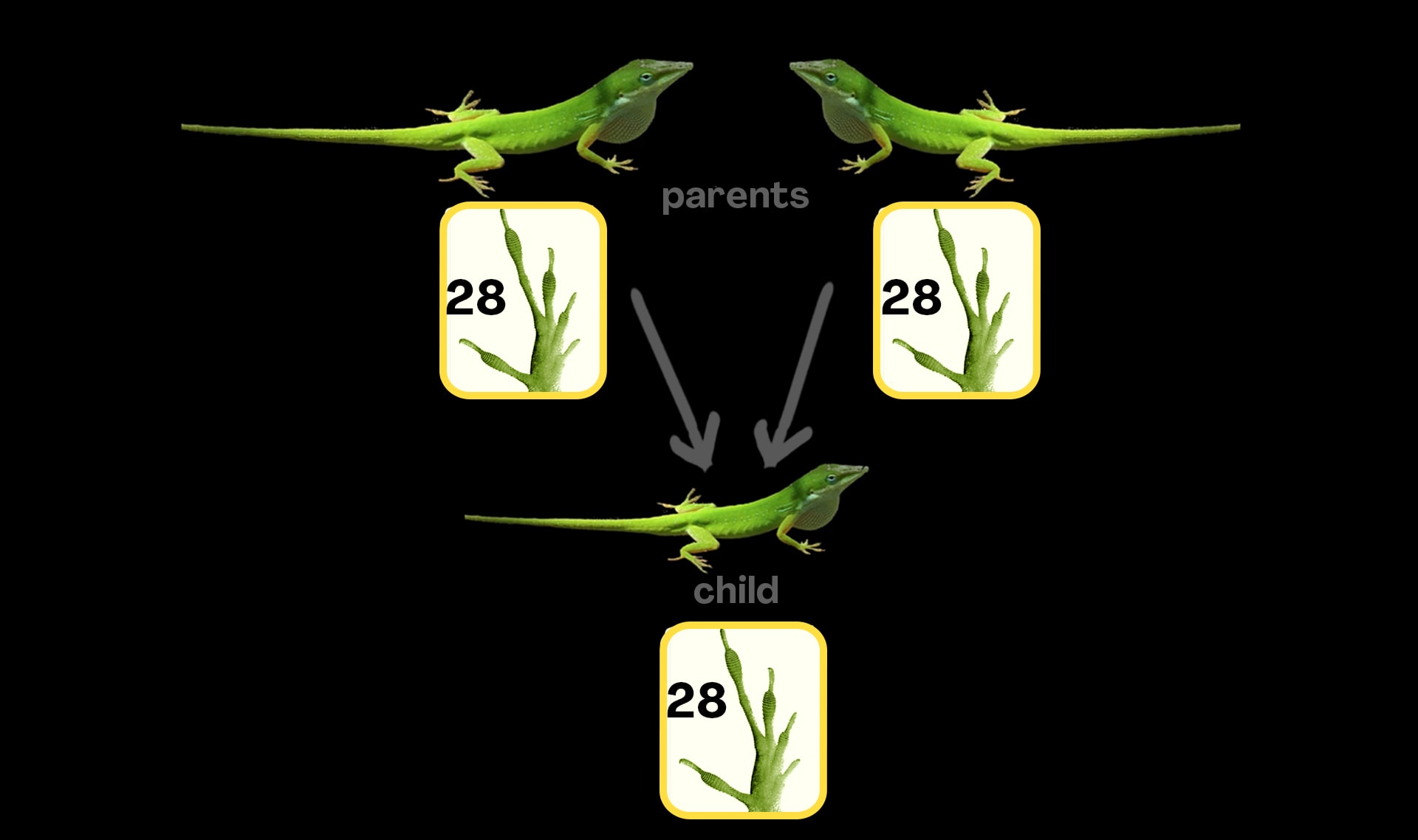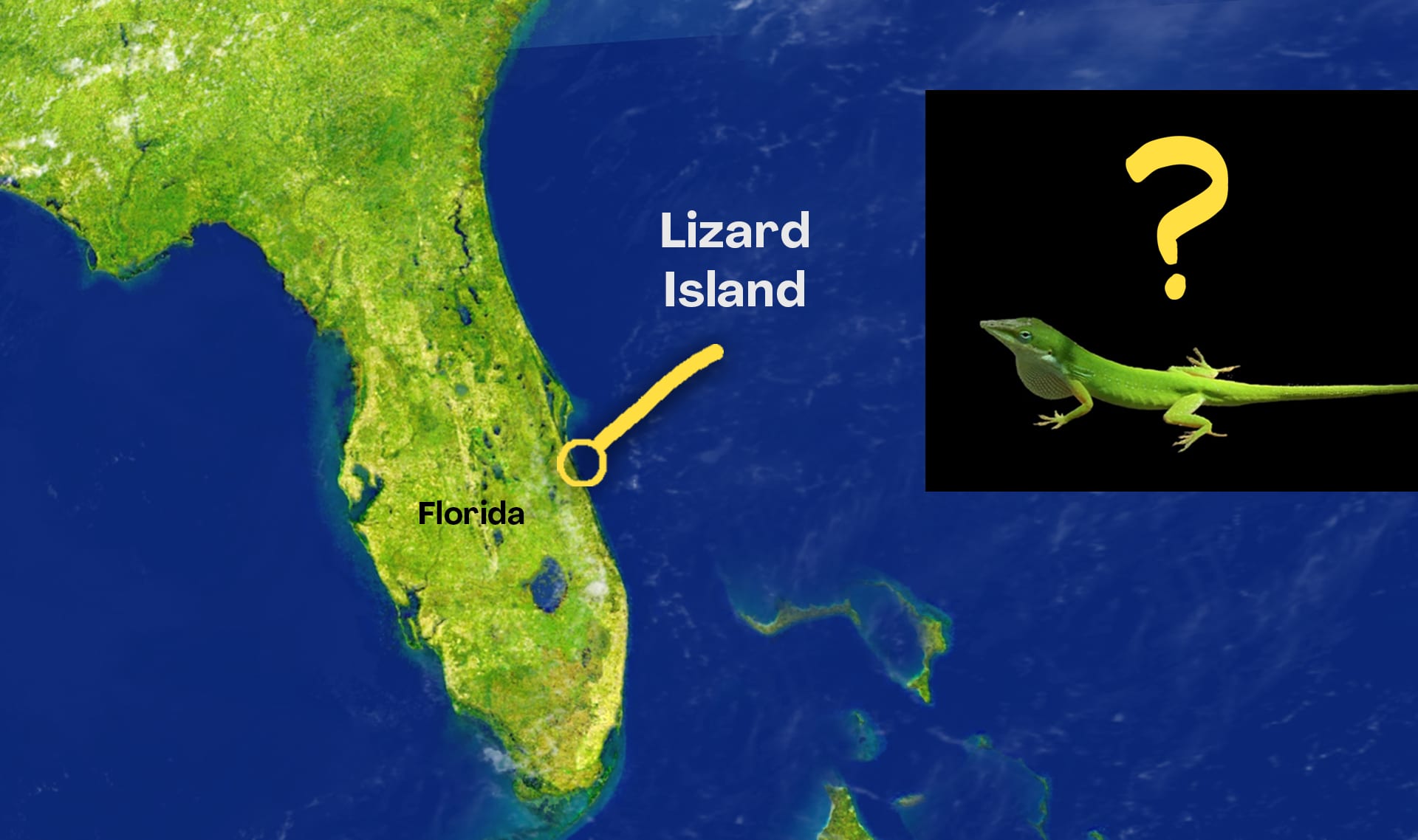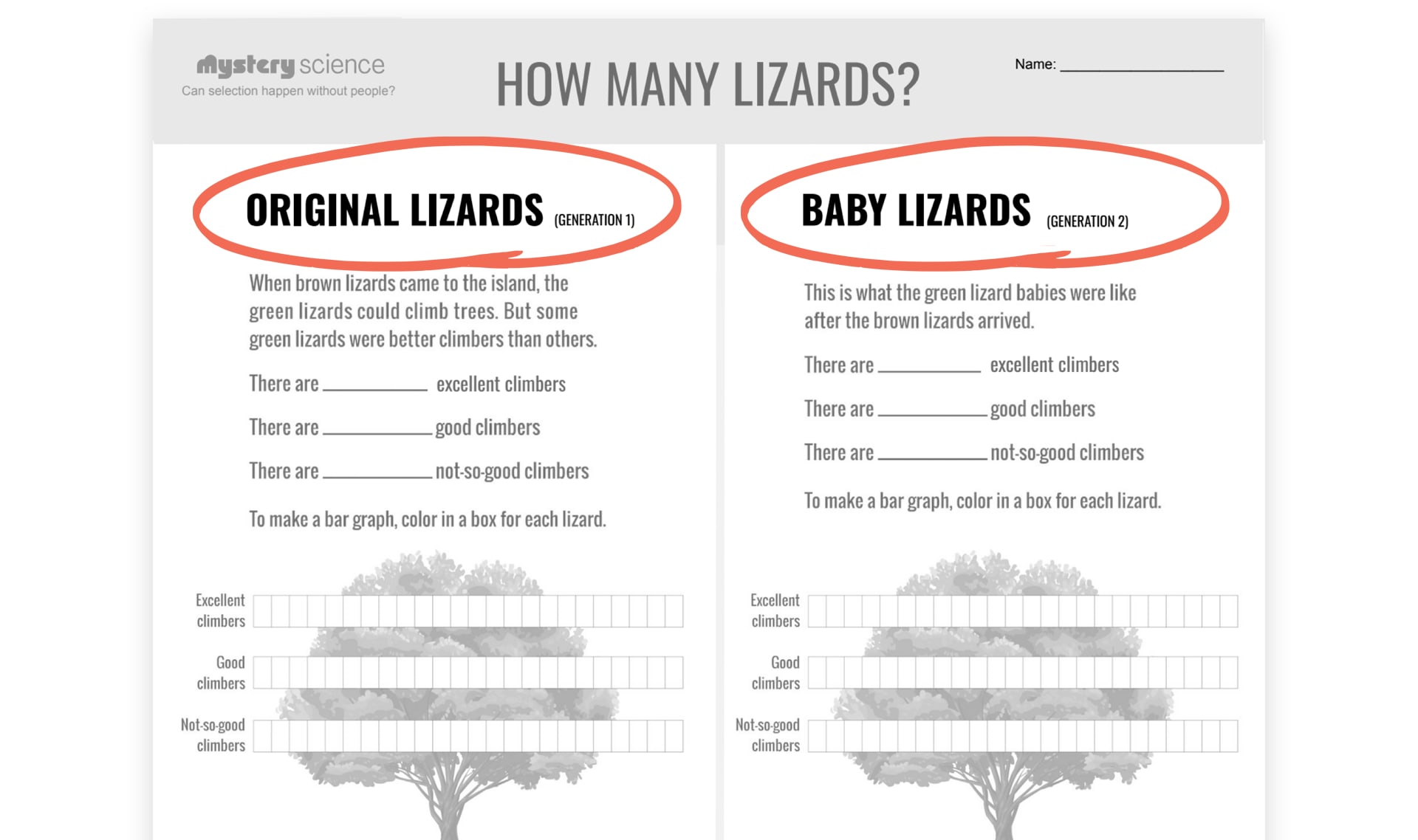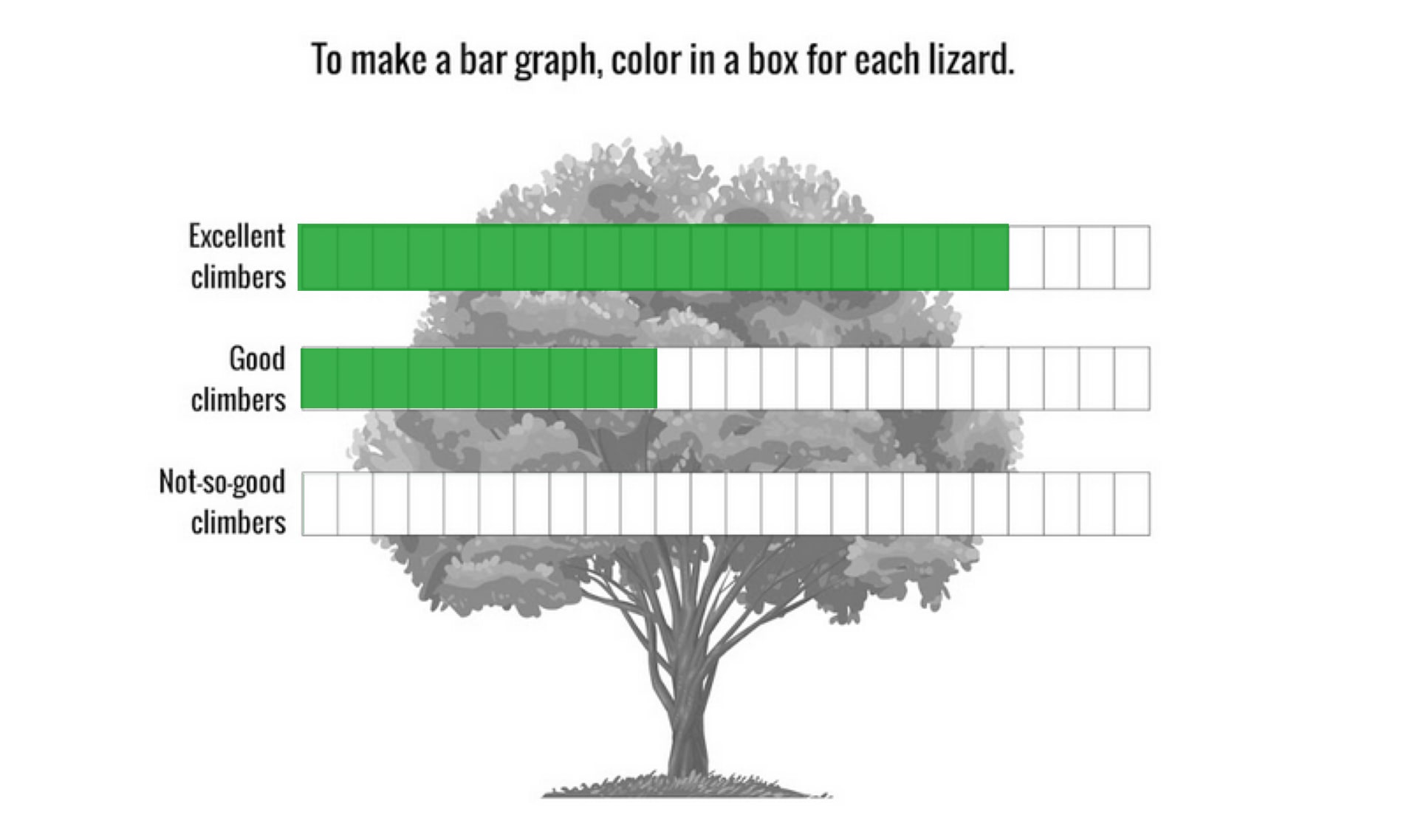Mystery Science respects the intellectual property rights of the owners of visual assets.
We make every effort to use images and videos under appropriate licenses from the owner or by
reaching out to the owner to get explicit permission. If you are the owner of a visual and
believe we are using it without permission, please
contact us—we will reply promptly and make
things right.
Exploration
Anole on rocks by
JamieS93
, used under CC BY-SA
2 Anoles by numbers by
Seadevil
tropical island by
Christopher Michel
, used under CC BY
brown geko by
Michel Pierfitte
, used under CC BY-SA
catching Anoles by
Adam Algar
green geko by
Tambako the Jaguar
, used under CC BY-ND
white geko by
Nick Hobgood
, used under CC BY
Tokay climbing wall by
Tokay Gecko
holding small Anole by
txbowen
, used under CC BY
green lizard with long tail by
Melissa Gutierrez
, used under CC BY-SA
Anole on log by
Paul Hirst
, used under CC BY-SA
lizard holding branch by
L Church
, used under CC BY
Cuban Anole by
Thomas Brown
, used under CC BY
cargo boat by
Gerolf Drebes
, used under CC BY-SA
large green lizard by
Euku
, used under CC BY-SA
fishermen by
Anole Annals Blog
lizard on flowers by
www.GlynLowe.com
, used under CC BY-ND
Anole on pipe by
Daniel Ramirez
, used under CC BY
